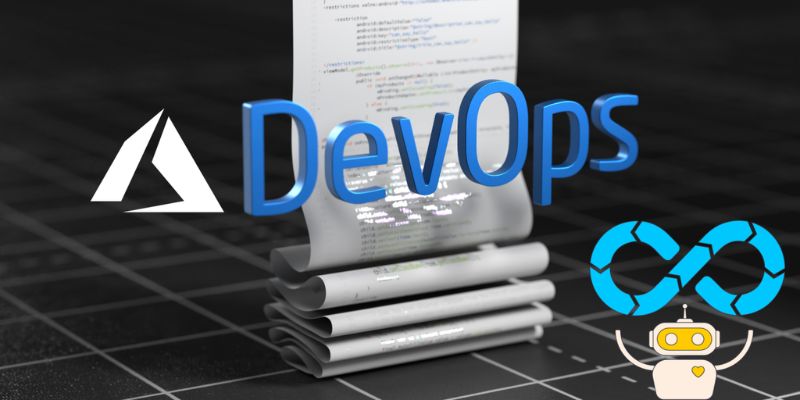
The world of software development and IT operations has changed significantly over the years, especially with the introduction of cloud technologies. DevOps, which stands for Development and Operations, is a practice that encourages collaboration between developers and IT teams to build, test, and release software quickly and reliably. As cloud computing becomes more popular and powerful, it is transforming the way DevOps teams work, making processes faster, more flexible, and highly scalable. In this blog, we will explore how the DevOps landscape is evolving due to the rapid growth of cloud technologies, and what this means for businesses and developers.
Cloud Platforms Are Becoming the Backbone of DevOps
One of the biggest shifts in the DevOps world is the move from traditional data centers to cloud platforms like Amazon Web Services (AWS), Microsoft Azure, and Google Cloud. These platforms offer on-demand resources, which means DevOps teams can easily access servers, storage, and databases without having to buy or maintain hardware. This shift is a major topic in the DevOps Course in Coimbatore, where learners explore cloud integration as a core component of modern DevOps.
Automation Is Easier and More Powerful in the Cloud
Automation is a key part of DevOps, and cloud technologies have taken it to the next level. Tasks like setting up servers, deploying applications, and managing configurations can now be automated with just a few clicks or scripts in the cloud. AWS empowers DevOps teams to achieve faster deployment. Cloud providers offer tools such as AWS CloudFormation, Azure Resource Manager, and Google Cloud Deployment Manager that allow teams to define infrastructure as code. This means everything from networks to applications can be set up in a repeatable and error-free way. Automation saves time, reduces mistakes, and allows teams to focus more on improving the software rather than managing the infrastructure.
CI/CD Pipelines Are More Efficient with Cloud Integration
Continuous Integration and Continuous Delivery (CI/CD) are practices that allow teams to release software updates frequently and reliably. Cloud technologies have made it easier to build, test, and deploy code in a smooth and automated pipeline. Services like AWS CodePipeline, Azure DevOps, and GitHub Actions help teams integrate their code changes automatically and deploy them across multiple environments. This means new features, updates, and bug fixes can be delivered to users quickly without interrupting their experience. As a result, businesses can stay competitive and respond faster to market demands.
Scalability and Flexibility Are Driving Innovation
Cloud technologies offer unmatched scalability, allowing DevOps teams to grow their infrastructure as needed. Whether a company is launching a small app or running a global platform, the cloud can provide the right amount of computing power on demand. As part of the DevOps Training in Madurai, students learn how to leverage scalability to build agile, microservices-based applications.
Monitoring and Observability Are More Advanced
Monitoring the health and performance of applications is crucial in DevOps. With cloud services, teams now have access to advanced monitoring and observability tools that give real-time insights into how systems are running. Tools like AWS CloudWatch, Azure Monitor, and Google Cloud Operations Suite help detect issues quickly, monitor usage trends, and improve system reliability. These tools use data and alerts to help DevOps teams fix problems before users even notice them. With better observability, teams can understand the behavior of applications in production and make informed decisions for future improvements.
Security Is a Shared Responsibility in the Cloud
As more companies move their DevOps processes to the cloud, security becomes an important concern. Cloud providers have improved security features to protect data, networks, and systems, but DevOps teams still have responsibilities. The DevOps Training in Pondicherry emphasizes best practices in cloud security, including compliance, secrets management, and automated testing.
Collaboration Tools Are Cloud-Based and Real-Time
Cloud technologies have also improved the way DevOps teams collaborate. With remote work becoming more common, cloud-based tools like Slack, Microsoft Teams, Jira, and Confluence allow teams to communicate, track issues, and share updates in real-time. Cloud-based version control systems like GitHub and GitLab help developers work together on code from different locations. This kind of collaboration makes it easier to solve problems, deliver updates faster, and keep everyone aligned on project goals. The cloud removes the barriers of location and time, enabling more efficient and agile teamwork.
Cost Management and Optimization Are Key Concerns
While the cloud offers many benefits, it can also lead to unexpected costs if not managed properly. DevOps teams are now focusing more on cost optimization by using cloud-native tools to monitor usage and adjust resources accordingly. Features like auto-scaling and pay-as-you-go pricing models help teams stay within budget. Cloud FinOps, a growing practice that combines financial and operational strategies, is helping organizations control costs while still supporting innovation and speed. As DevOps teams mature in the cloud, cost management becomes a vital part of their overall strategy.
The rise of cloud technologies has completely reshaped the DevOps landscape. From easier automation and faster deployment to improved collaboration and scalability, the cloud offers tools and resources that make DevOps more efficient and effective. As businesses continue to move to the cloud, DevOps teams need to adapt by learning new tools, adopting cloud-native practices, and focusing on automation, security, and cost management. The DevOps Training in Tirupur equips professionals with the skills needed to thrive in this dynamic environment and lead successful DevOps transformations.
Also Check:
What are the Best Practices for Building a Strong DevOps Culture?
